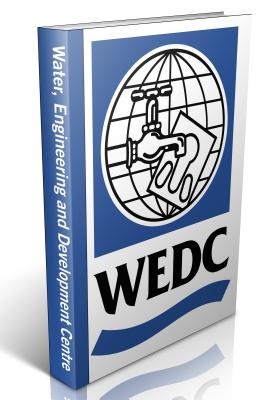
- We will send in 10–14 business days.
- Author: Who
- Publisher: World Health Organization
- Year: 1992
- Pages: 245
- ISBN-10: 9241544430
- ISBN-13: 9789241544436
- Format: 21 x 27.9 x 1.4 cm, minkšti viršeliai
- Language: English
- SAVE -10% with code: EXTRA
Reviews
Description
Provides detailed practical and technical advice intended to guide the selection, design, construction, and maintenance of on-site facilities for the removal of human excreta. Addressed to engineers, sanitarians, medical officers, and project planners, the book concentrates on technical options suitable for householders building their own latrines, whether in small communities, rural areas, or deprived urban settlements. Details range from line drawings illustrating features of design and construction, through a list of reasons why improved sanitation may elicit negative responses from users, to instructions for calculating the internal dimensions of a septic tank. The book features eleven chapters in three parts. Chapters in the first part introduce the foundations of sanitary practice, describe the links between excreta and disease, and explain the numerous social and cultural factors that must be considered at the planning phase. Chapters in the second and most extensive part provide a detailed technical guide to the design, construction, operation and maintenance of all the main options for on-site sanitation. Chapters describe how the different types of latrine work, discuss their relative merits, and set out detailed plans for the construction of latrines and their components. The final part features three chapters on the planning and development of on-site sanitation projects, underscoring the need for a thorough analysis of cultural as well as design features. "... an intriguing book..." - International Journal of Environmental Studies
EXTRA 10 % discount with code: EXTRA
The promotion ends in 21d.08:49:52
The discount code is valid when purchasing from 10 €. Discounts do not stack.
- Author: Who
- Publisher: World Health Organization
- Year: 1992
- Pages: 245
- ISBN-10: 9241544430
- ISBN-13: 9789241544436
- Format: 21 x 27.9 x 1.4 cm, minkšti viršeliai
- Language: English English
Provides detailed practical and technical advice intended to guide the selection, design, construction, and maintenance of on-site facilities for the removal of human excreta. Addressed to engineers, sanitarians, medical officers, and project planners, the book concentrates on technical options suitable for householders building their own latrines, whether in small communities, rural areas, or deprived urban settlements. Details range from line drawings illustrating features of design and construction, through a list of reasons why improved sanitation may elicit negative responses from users, to instructions for calculating the internal dimensions of a septic tank. The book features eleven chapters in three parts. Chapters in the first part introduce the foundations of sanitary practice, describe the links between excreta and disease, and explain the numerous social and cultural factors that must be considered at the planning phase. Chapters in the second and most extensive part provide a detailed technical guide to the design, construction, operation and maintenance of all the main options for on-site sanitation. Chapters describe how the different types of latrine work, discuss their relative merits, and set out detailed plans for the construction of latrines and their components. The final part features three chapters on the planning and development of on-site sanitation projects, underscoring the need for a thorough analysis of cultural as well as design features. "... an intriguing book..." - International Journal of Environmental Studies


Reviews